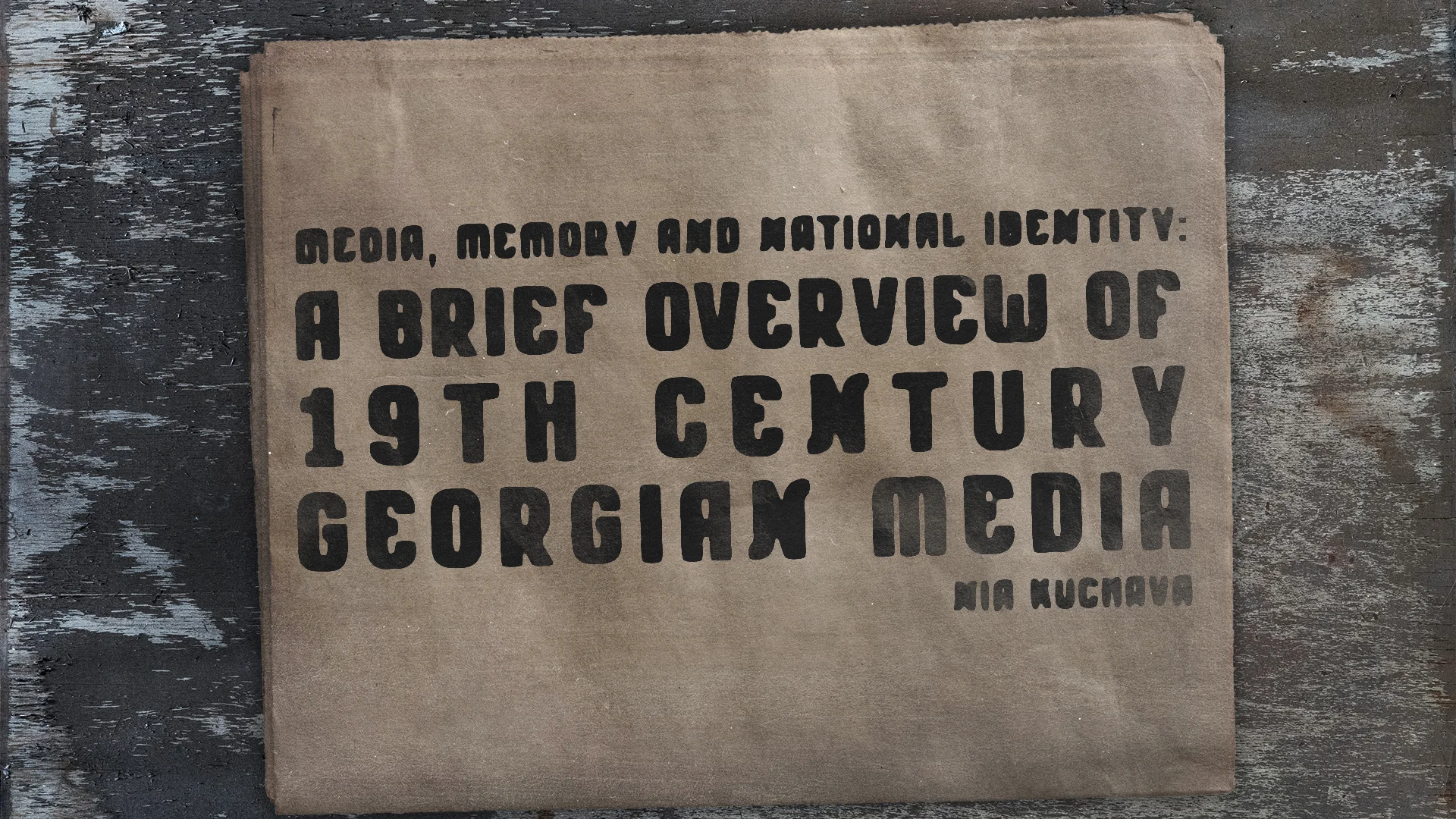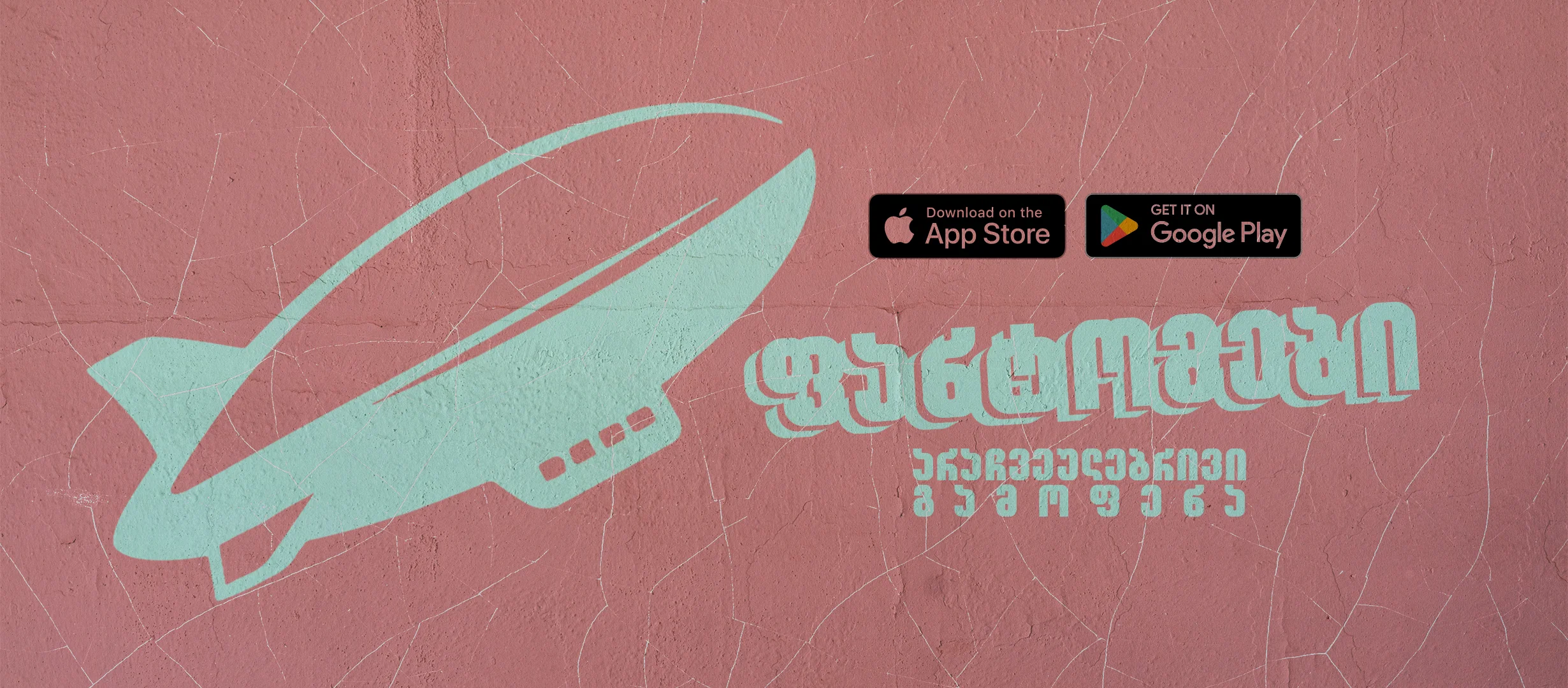Author: Nia Kuchava
The role of the media in shaping national consciousness is not a new topic in the discussion of nationalism. The powerful influence of print media—especially magazines and newspapers—has played a key role in the development of nationalism, national ideas, and the national imagination. Several such publications appeared in 19th-century Georgia, and they are very important when talking about the origins and nature of Georgian nationalism and national identity.
In this article, we will look at some important trends and key ideological changes that helped reshape the idea of the state and led to the formation of nation-states globally. We will also focus on the Georgian context—especially in the city of Kutaisi—and briefly analyze the unique role that Georgian newspapers played during this time, even while the Russian Empire was constantly trying to suppress the idea of Georgian statehood.
First of all, when discussing the beginning of national consciousness, we must remember Benedict Anderson’s concept of “Imagined Communities.” According to Anderson, a nation is a kind of imagined unity that is created through people’s ability to imagine themselves as part of a group. This national imagination is built with the help of symbols and images, which connect individuals with the feeling of unity, eternity, and shared identity. The main tool that supported this development was the media.
Anderson gives several reasons for this. The invention of the printing press by Gutenberg and the rise of the Reformation led to a boom in printed materials. People started to translate religious texts into their own languages, and within multi-ethnic dynastic states, they began to write and exchange ideas in their native, everyday languages. These languages, once limited by the formal language of the state, became more widely used in public communication. This created both a linguistic and ideological connection among people. As they started thinking about the same problems, reading about similar topics, and sharing concerns, their sense of solidarity grew stronger.
The print media helped create a shared information space and a feeling of continuity. Characters and stories in newspapers stayed in people’s minds, even without re-reading. This created a new way of understanding time and space—events that people read about became part of their experience. In this way, newspapers helped form the national imagination. The regular appearance of printed materials and their wide availability meant that people were constantly influenced by them.
The first Georgian newspaper was published in 1819. One of the main goals of this newspaper, called “Sakartvelos Gazeti,” (Newspaper of Georgia) was to connect the Georgian information space to the Russian Empire’s narratives and create a sense of closeness and loyalty to the empire. However, we cannot be completely sure that this newspaper truly served that function. Even though its content was full of news that tried to present the Russian Empire as a powerful, civilized, and progressive center, the newspaper also opened up a new space for communication among Georgians.
The topics it covered were often simple and focused on entertainment and general knowledge. This matched the goals of the Russian Empire, which wanted to “educate” the newly annexed region without allowing political ideas to enter the Georgian imagination. The image of Georgia was to be kept as a place of development under the empire’s protection, and discussions about statehood or national politics were not welcome. This control over content was meant to prevent the rise of nationalist ideas.
By 1820, the newspaper changed its name to “Kartuli Gazeti “ (Georgian Newspaper). This change showed that the empire wanted to avoid creating a strong sense of national unity among Georgians. Discussions in the Georgian language were allowed, but they had to stay away from political topics. The media was not supposed to give people a platform to express political ideas or to imagine Georgia as an independent political entity.
After the newspaper’s short existence, important political changes continued to happen. A key moment was the failed 1832 conspiracy. After this event, Georgian political thought faced a serious obstacle. The belief in statehood and in a politically organized society became weaker. For many years, public debate and political discussions almost disappeared. There were no arguments, no strong opinions, and no ideological battles that could push people to think about change.
This is the situation Ilia Chavchavadze wanted to change. He believed that public debates and ideological discussions were necessary to bring back the idea of a Georgian state. By arguing with other writers and publications, he hoped to inspire people to think about what kind of society they wanted, and by doing so, to imagine a future Georgian state. These ideological differences and open debates would help form the idea of Georgia as a political entity and show that its structure and direction could be discussed and decided by its people.
It was during this period of national awakening—when people were discussing banks, theaters, newspapers, translations, and literary tastes—that the first newspaper in Kutaisi was founded. “Shroma” (Labour) was published from 1881 to 1883 and focused on political and literary topics. While “Droeba” existed in Tbilisi, “Shroma “ gave Kutaisi a space for political thinking and allowed it to take part in the national conversation.
The editor of “Shroma” was Dimitri Dadiani, who was interested in political reflections about Georgian society, its unity or lack of it. The public letters published in the newspaper, including several by Akaki Tsereteli, were often ironic and critical. Their purpose was to raise questions, to constantly rethink various topics, and most importantly, to continue the development of Georgian national consciousness. These writings were a direct response to the events of the time and formed part of a long-term effort to build and strengthen the national identity.



